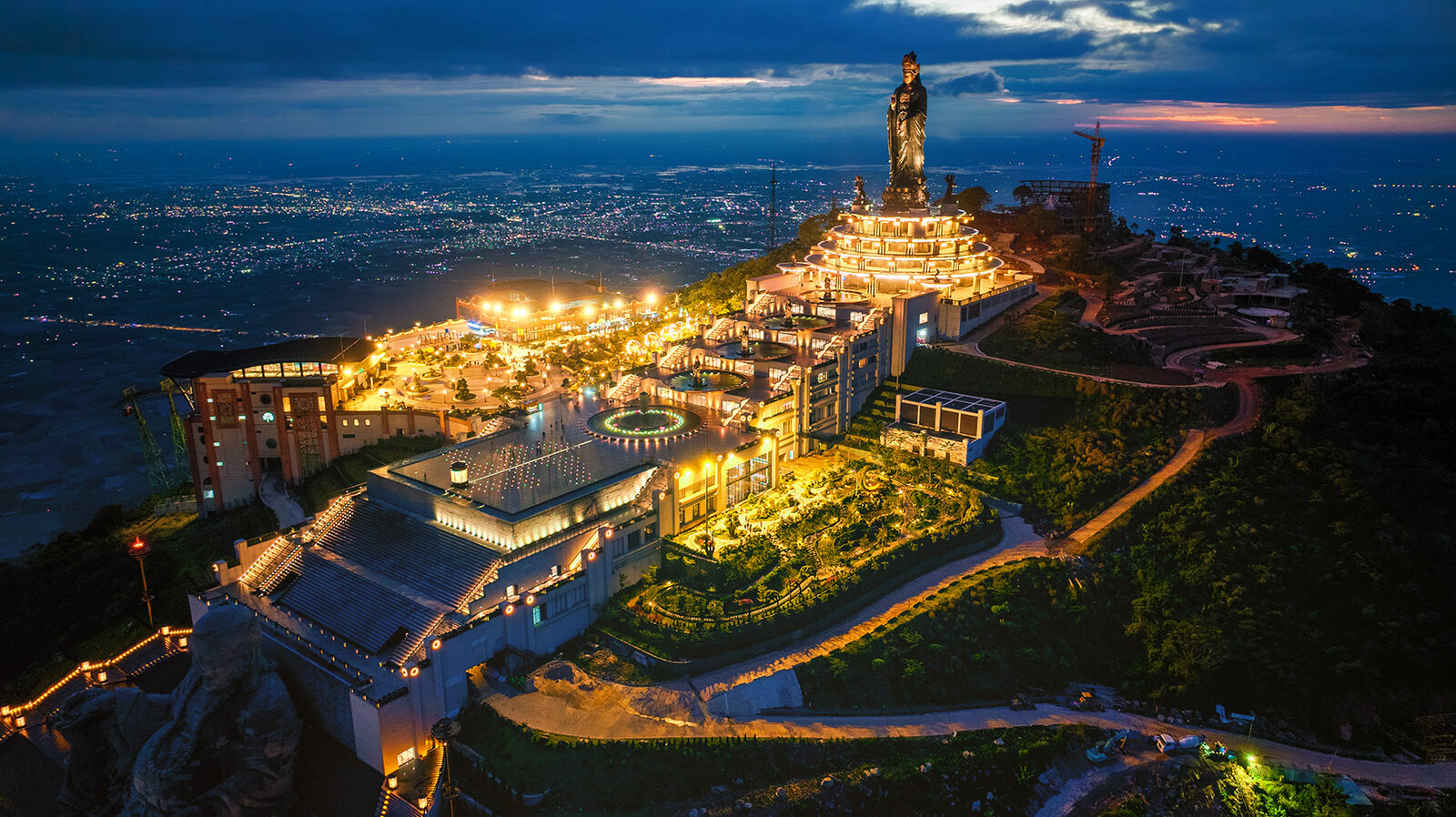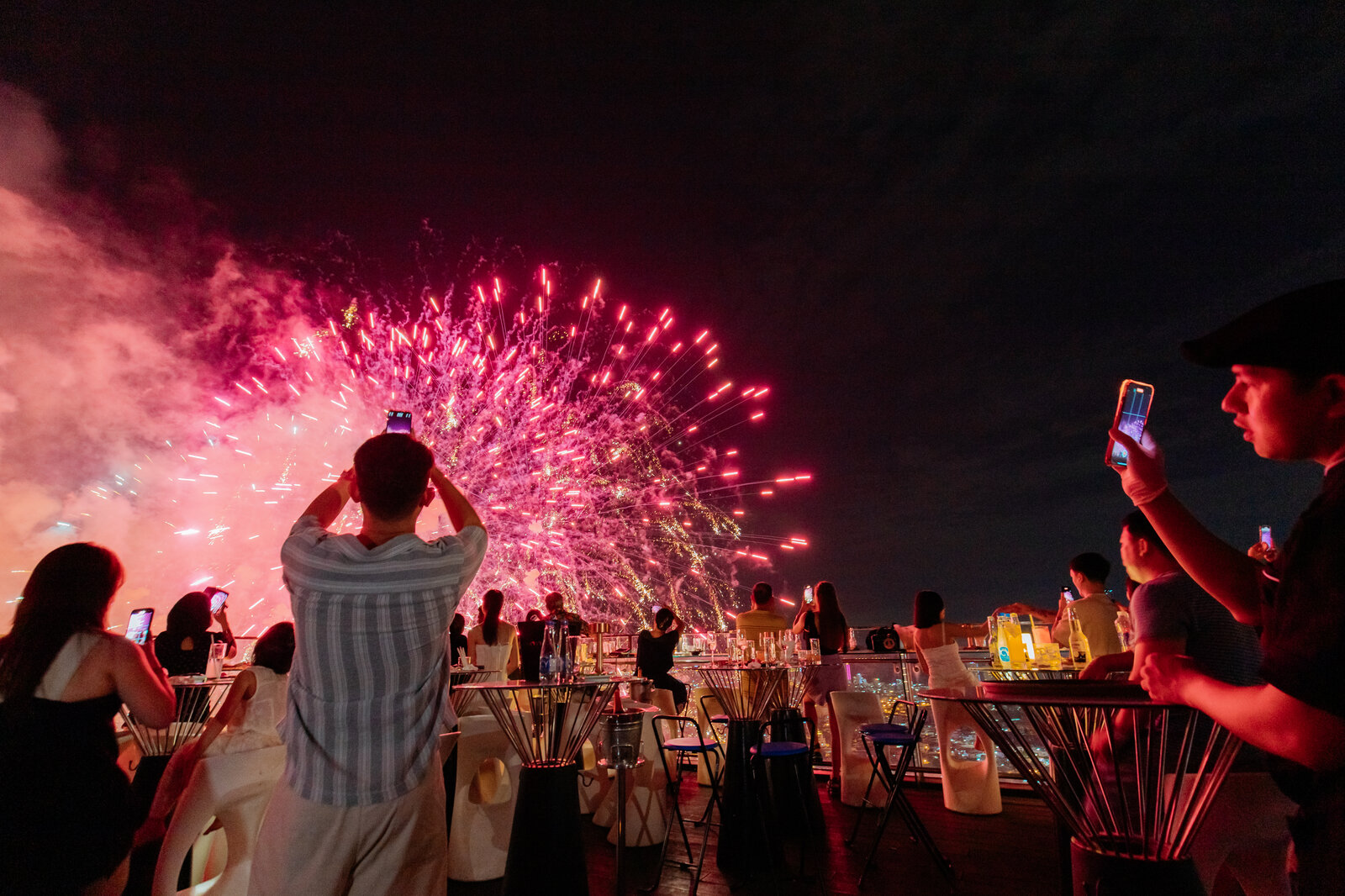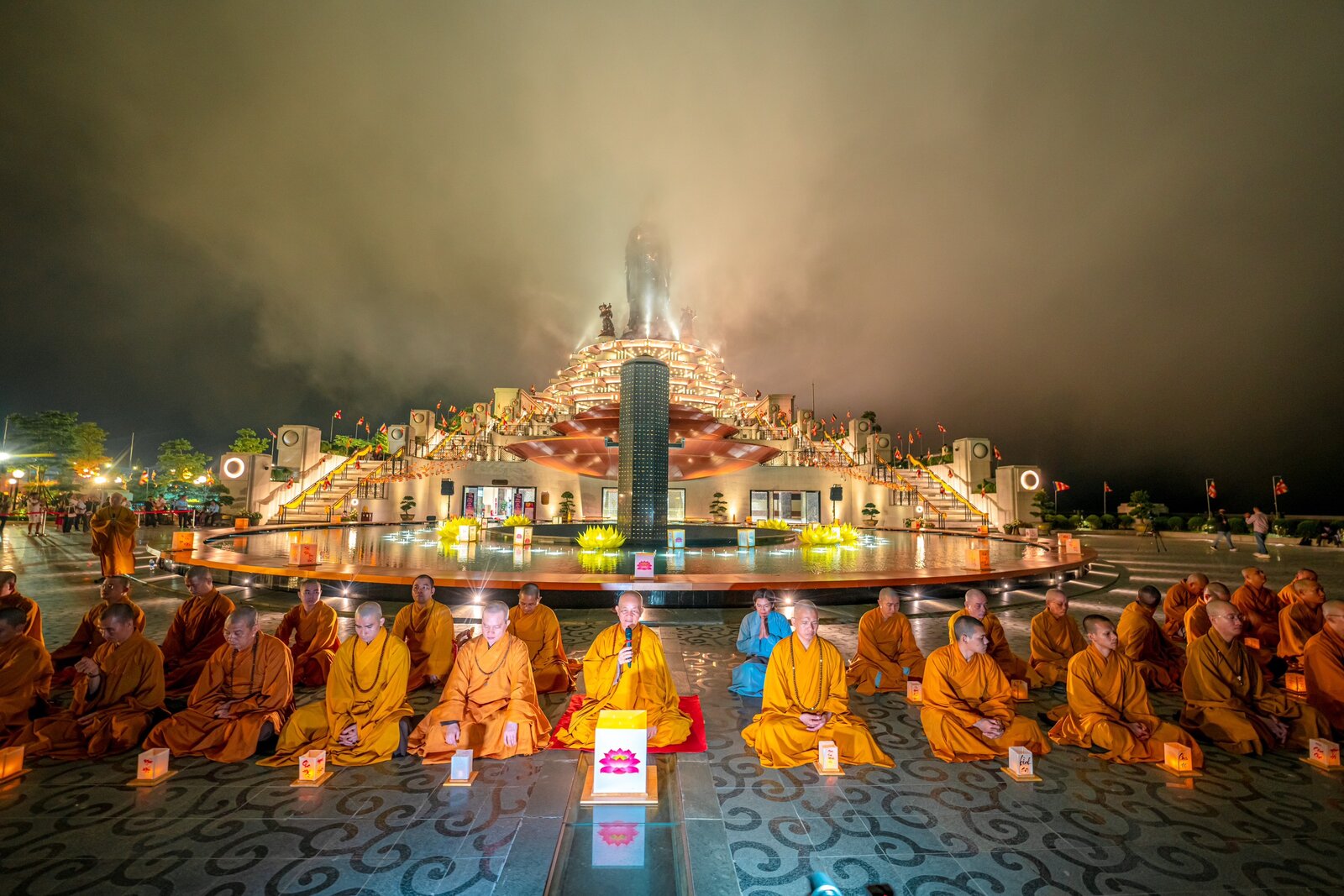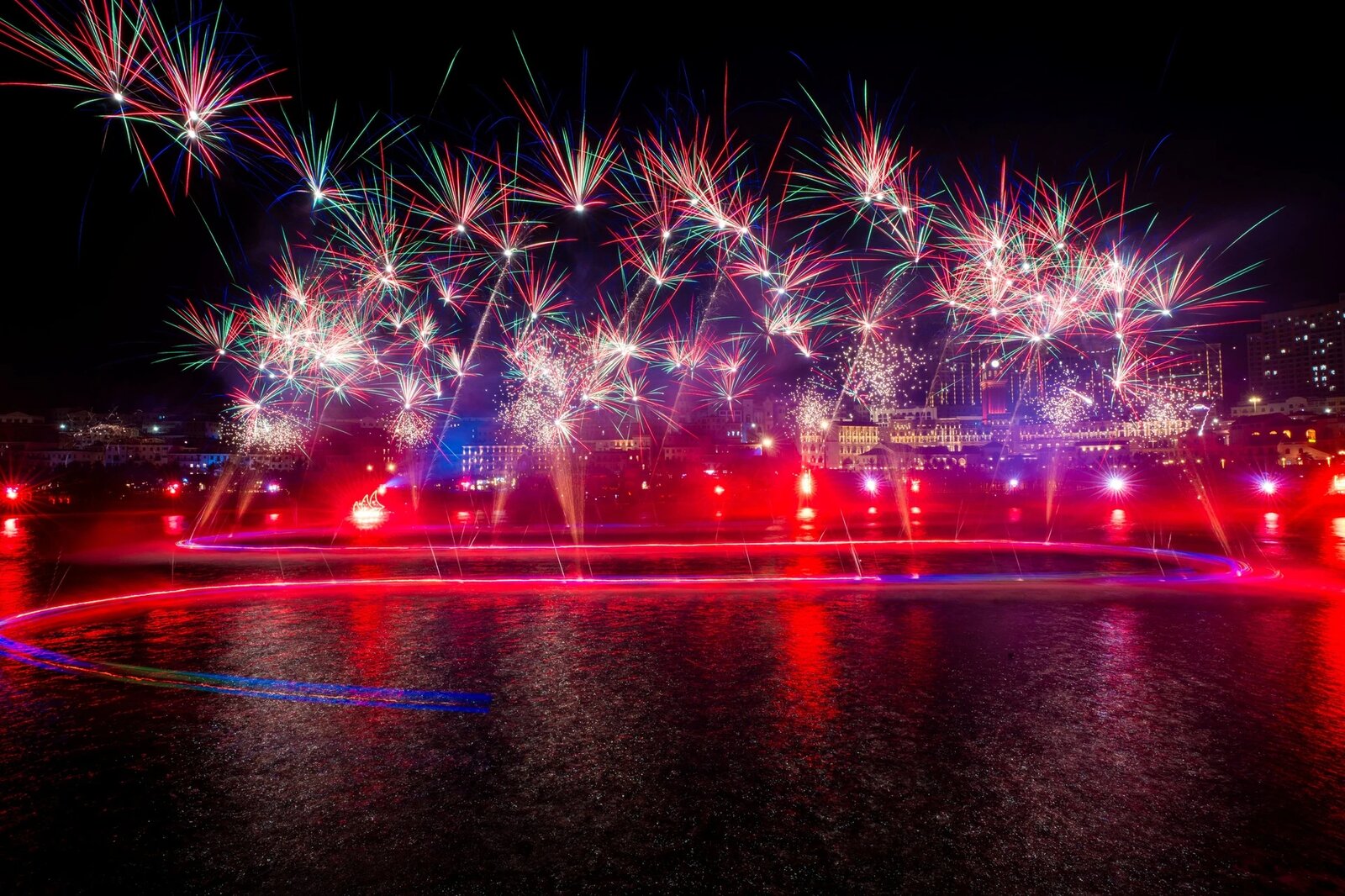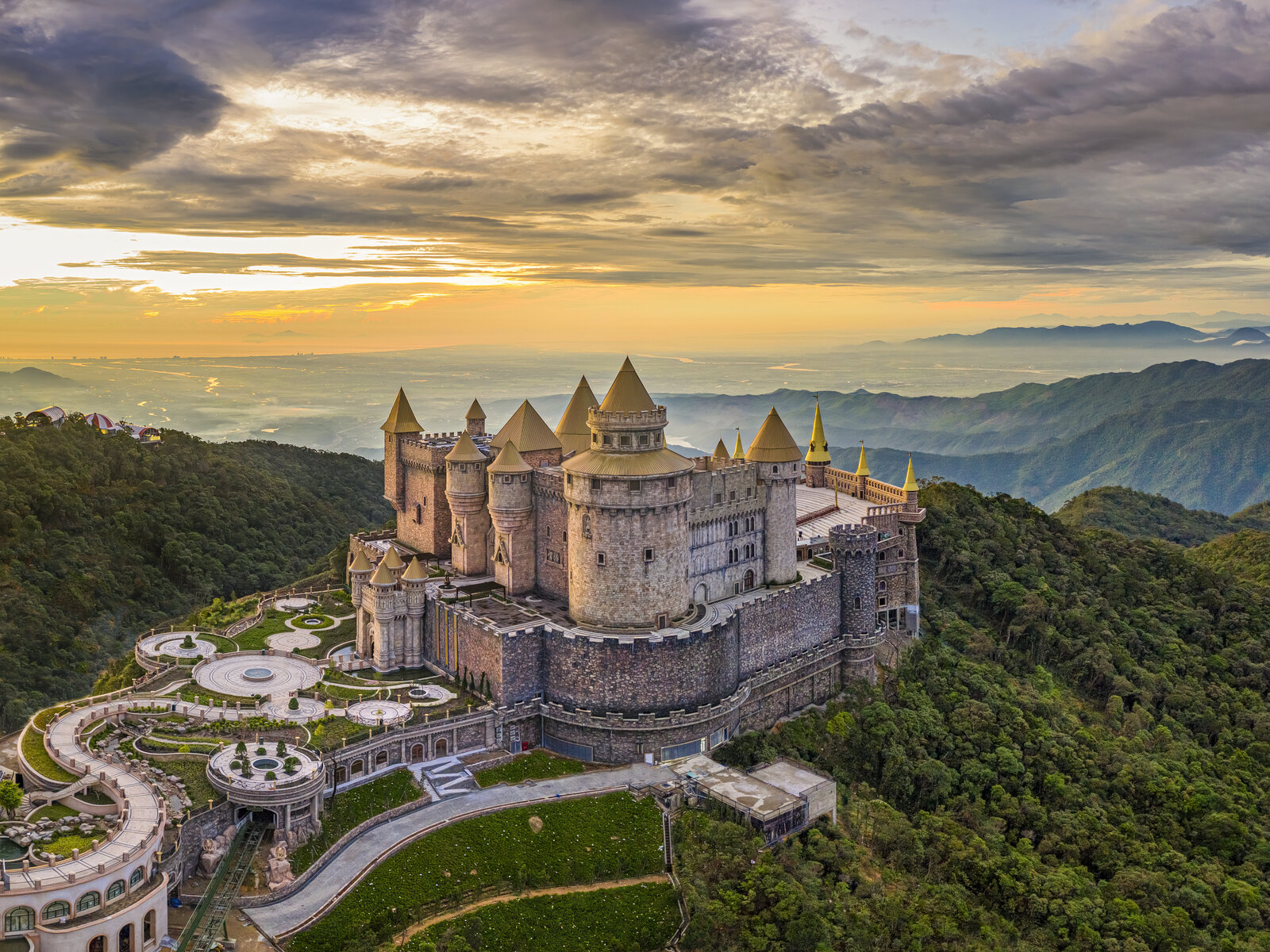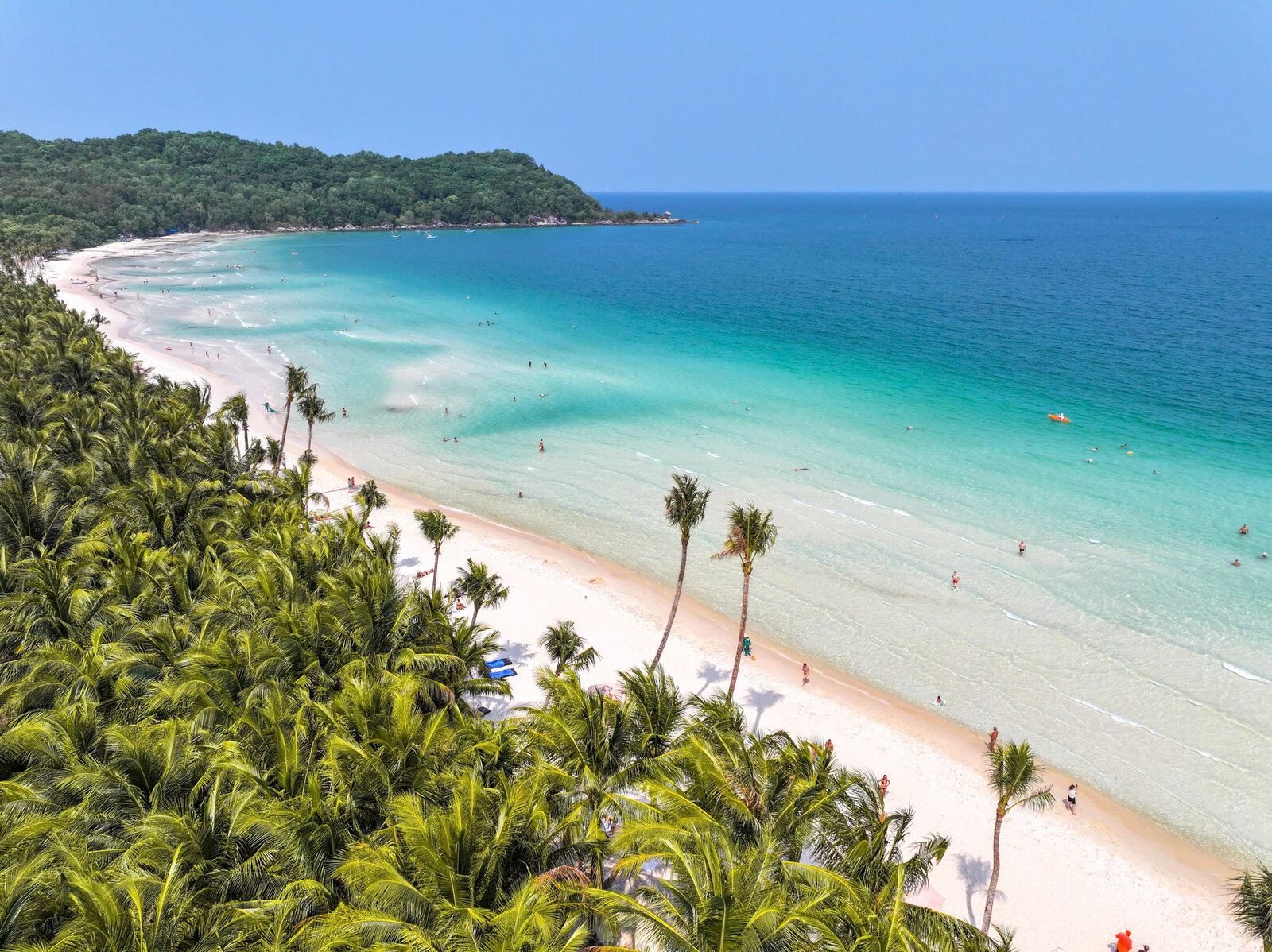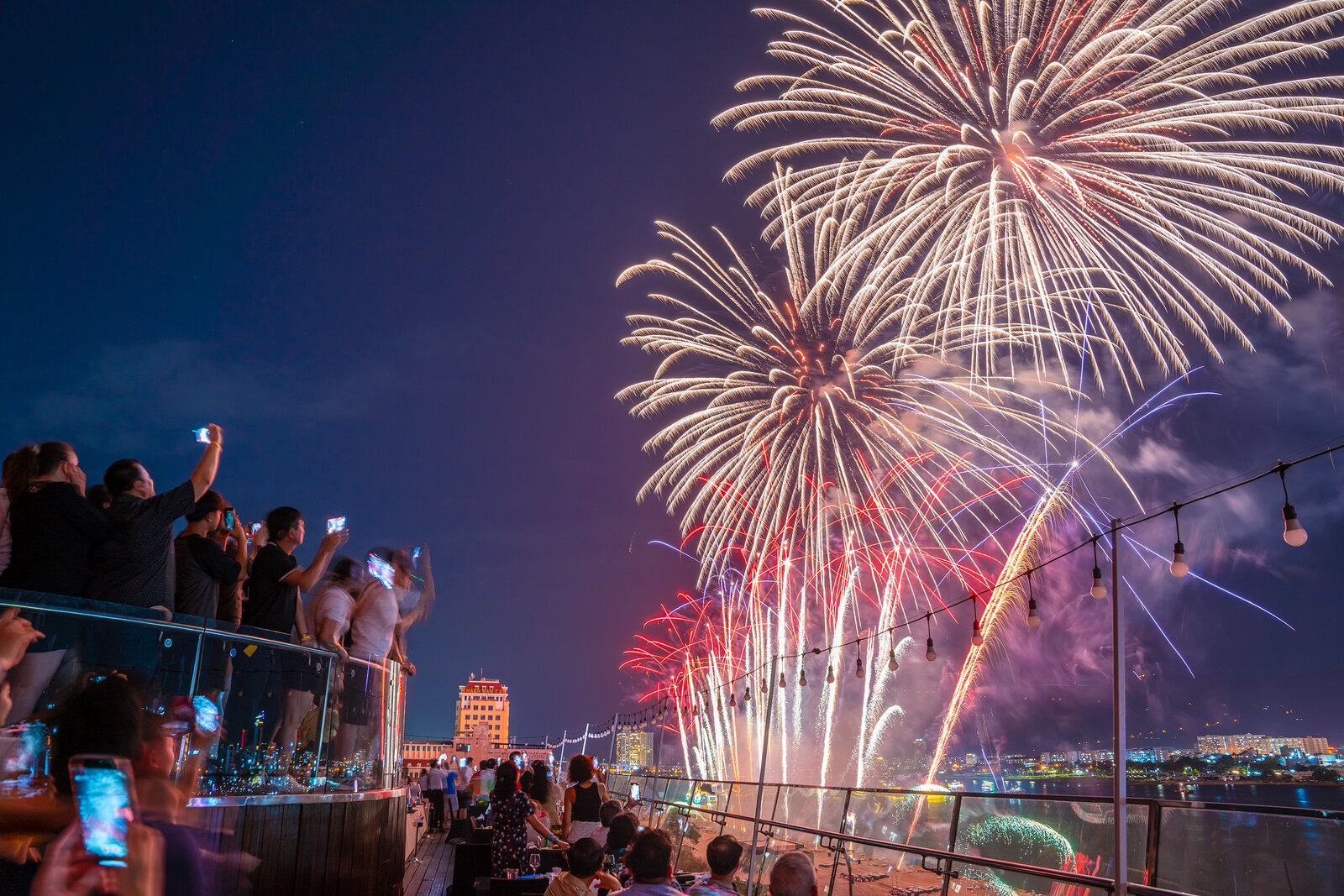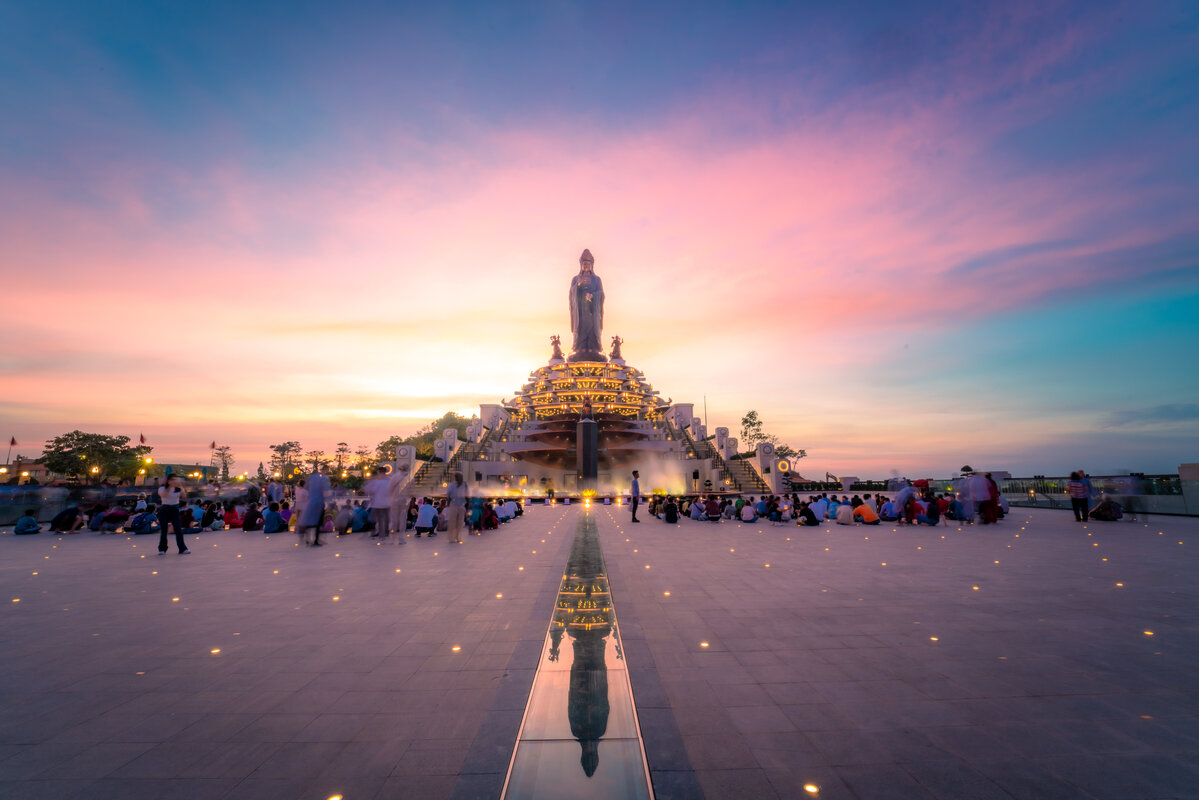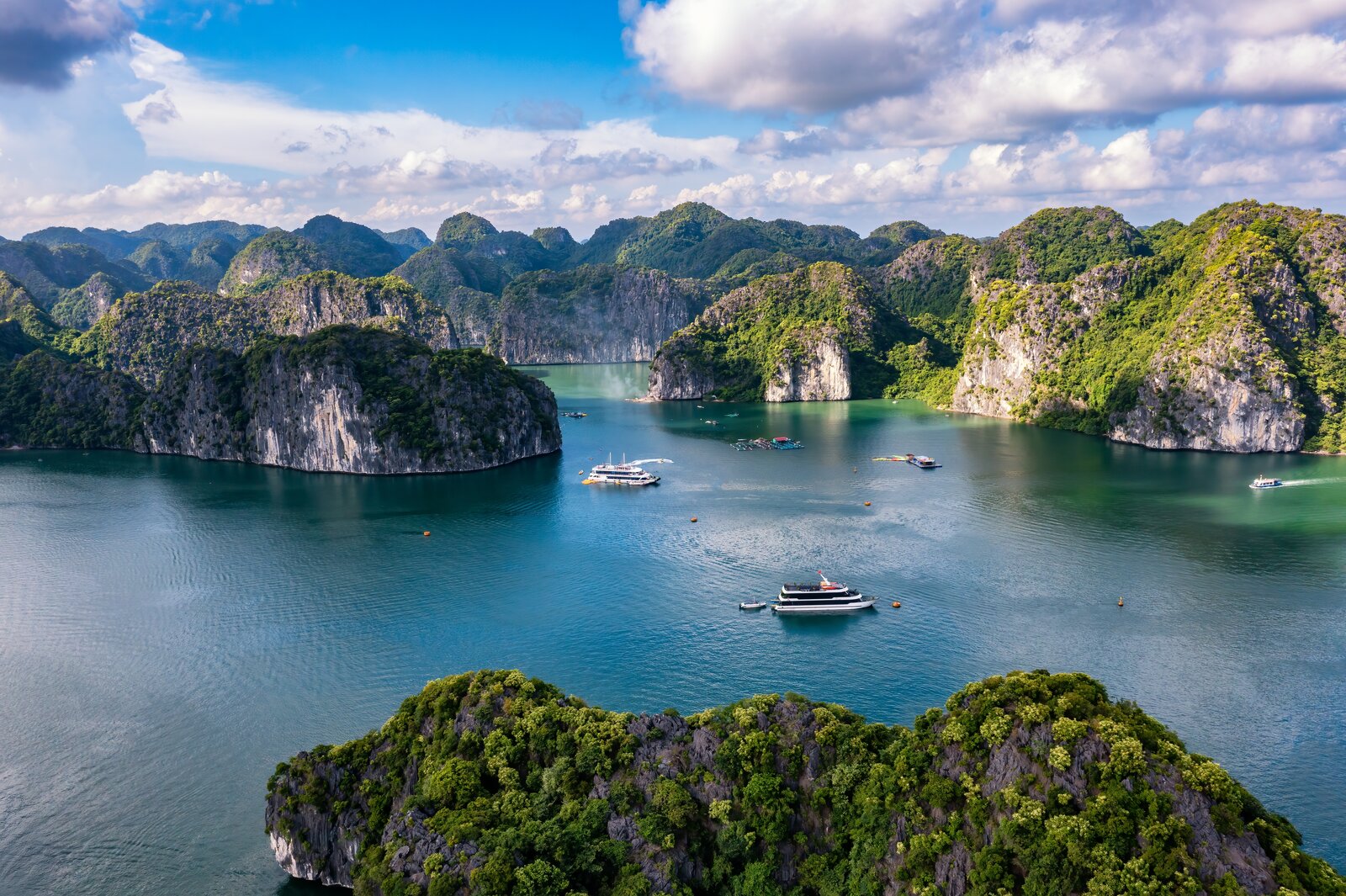According to Lonely Planet, international travelers interested in exploring culture, history, and war remnants can follow an itinerary starting from Ho Chi Minh City, then visiting the Cu Chi Tunnels, the Cao Dai Holy See, and Ba Den Mountain (Tay Ninh). The travel platform Get Your Guide describes this as an enticing journey that blends history, culture, and spirituality. “Learn about the Vietnam War, attend a midday prayer session, and enjoy vegetarian cuisine...” – Get Your Guide’s introduction sparks curiosity among international visitors.
The majestic and awe-inspiring scenery of the "roof of the Southern region" - Photo: Tran Tuan Viet.
In Lonely Planet’s Top 15 Experiences in Vietnam for 2025, visiting the Cao Dai Holy See in Tay Ninh ranks fourth, alongside other remarkable experiences such as exploring Bai Tu Long Bay and visiting the imperial tombs in Hue. Travellers are advised to extend their journey by heading 15 km northeast to Ba Den Mountain, taking a cable car to the summit, and exploring the temple and cave complexes.
Located about 100 km northwest of Ho Chi Minh City, Ba Den Mountain stands at 986 meters, earning the title "roof of Southern Vietnam." The mountain’s majestic presence, often shrouded in drifting white clouds, creates a mesmerizing landscape. It is also a significant religious centre, attracting millions of visitors annually for both tourism and pilgrimage. The site is home to numerous Buddhist and folk religious structures, including temples, pagodas, shrines, and towers.
Ba Temple is the oldest temple in the spiritual complex at Ba Den Mountain
The temple complex on the mountain creates a sacred atmosphere, drawing visitors to explore and learn about the history and culture of Southern Vietnam. Among the most visited spiritual sites is Linh Son Tien Thach Pagoda, closely linked to the legend of Ba Den, also known as Linh Son Thanh Mau Bodhisattva. As a symbol of faith in Southern Vietnam, Linh Sơn Thanh Mau is revered for her miraculous manifestations and compassion, serving as a spiritual anchor for the local people.
"The highlight of Ba Den Mountain is the noticeably cooler temperature compared to the lowlands," Lonely Planet describes. With temperatures consistently 5-10°C lower than the plains, Ba Den Mountain is an ideal retreat from the heat in Tây Ninh, which experiences a tropical climate year-round. Many Southern Vietnamese even call this place as "Da Lat of Southeastern Vietnam."
Ba Den Mountain peak attracts millions of visitors annually
Beyond its cultural and spiritual values, Ba Den Mountain also preserves significant war remnants. During the First Indochina War and the Vietnam War, the area served as a strategic base for the Viet Minh and the National Liberation Front of South Vietnam. Positioned along a vital supply route, it was the site of fierce battles between Vietnamese forces and French and American troops.
During the Vietnam War, Ba Den Mountain suffered heavy bombardment by U.S. air forces and became a key battleground. Its caves were used as shelters, weapon storage sites, and command centres for military operations. Today, remnants of the war remain, making the mountain an essential part of Vietnam’s historical exploration—especially for international visitors departing from Ho Chi Minh City.
The Maitreya Buddha statue of Ba Den Mountain – a sandstone wonder.
To explore Ba Den Mountain, visitors can take advantage of a modern cable car system, which provides easy access to key attractions, including war memorial sites and temple complexes. A notable highlight of the mountain is the Bodhisattva Tay Bo Da Son statue, standing 72 meters tall. This intricately carved statue, cast from over 170 tons of red copper, is recognized by the Asia Book of Records as the "Tallest Copper Bodhisattva Statue on a Mountaintop in Asia. At the peak, visitors will also find a statue of Maitreya Buddha, representing joy and future blessings. According to folk beliefs, the beginning of the year is the best time to seek Maitreya’s blessings and embrace positive energy for the future.
With its combination of cultural heritage, war history, and significant religious sites, Ba Den Mountain is more than just a scenic attraction. It is also a "red address"—a particularly meaningful destination for those interested in history and the unique identity of this borderland region.

